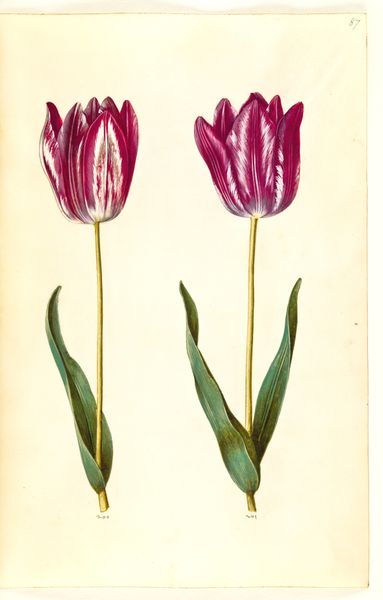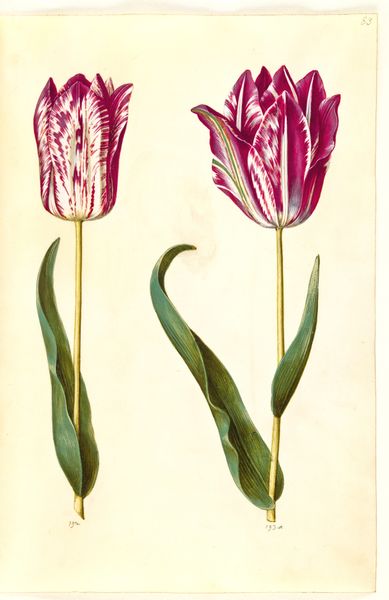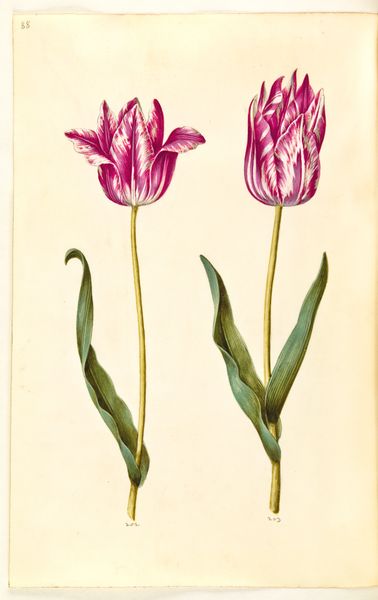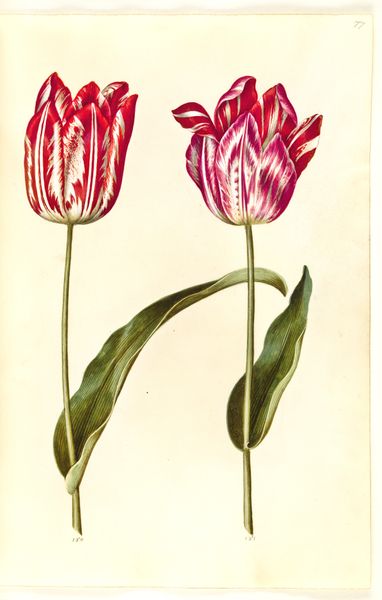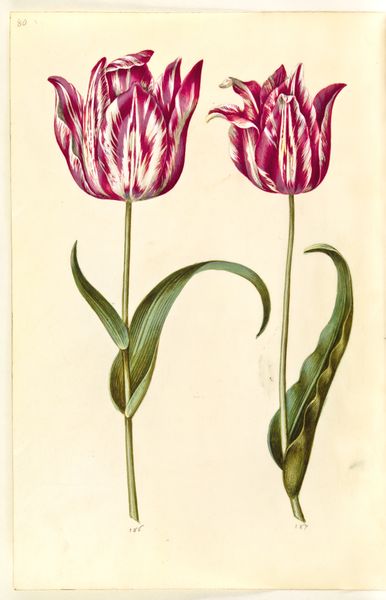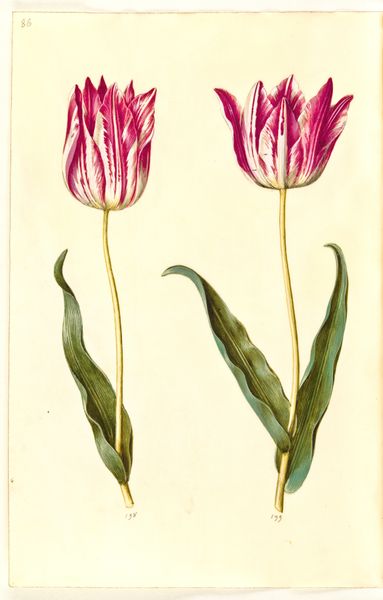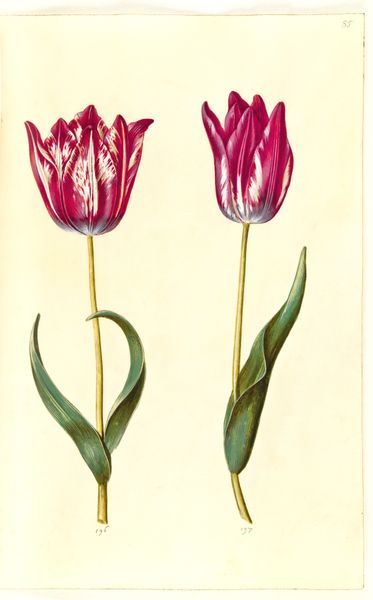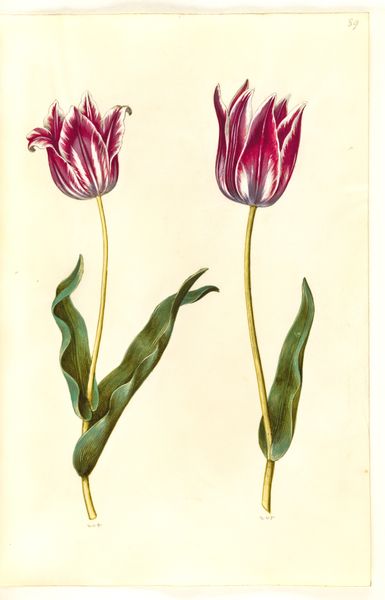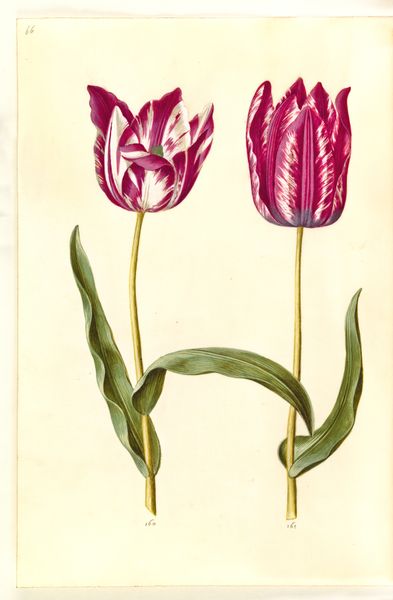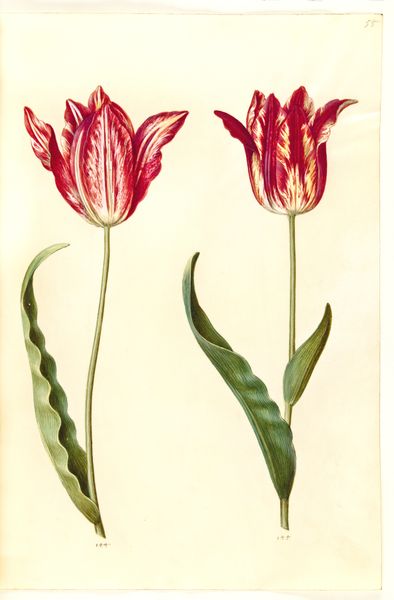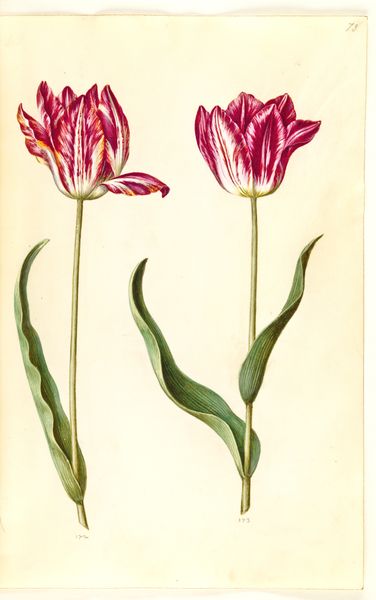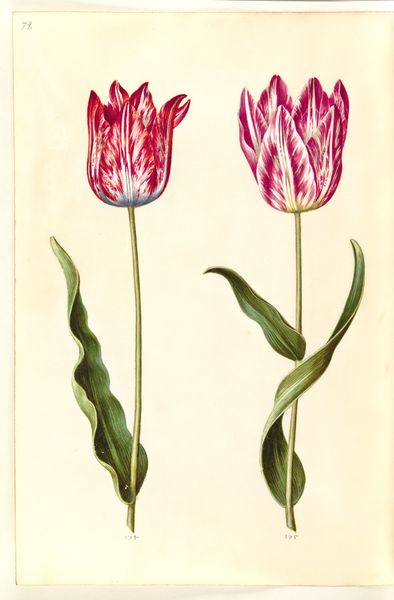
drawing, gouache, watercolor
#
vegetal
#
portrait
#
drawing
#
gouache
#
form
#
watercolor
#
line
#
watercolour illustration
#
northern-renaissance
#
botanical art
#
realism
Dimensions: 375 mm (height) x 265 mm (width) x 85 mm (depth) (monteringsmaal), 358 mm (height) x 250 mm (width) (bladmaal)
Curator: Here we have Hans Simon Holtzbecker’s "Tulipa gesneriana (have-tulipan)," likely created sometime between 1635 and 1664. It's a delicate rendering in watercolor and gouache. Editor: It’s beautifully observed; my initial impression is one of both fragility and flamboyant display. There’s something very intentional about its presence. Curator: Absolutely. Holtzbecker's meticulous attention to line and form is evident. Look at how each stripe on the petals is painstakingly rendered, giving dimension and capturing the texture. It exemplifies the Northern Renaissance interest in botanical realism. Editor: And within the context of the Dutch Golden Age, one must acknowledge the cultural obsession with tulips—"Tulip Mania". These weren't simply beautiful flowers, but potent symbols of wealth and status, intrinsically linked to speculative financial markets. Their visual representation underscores their socioeconomic importance. Curator: A compelling point. Considering the artist's emphasis on symmetry and the subtle gradations of color, one cannot help but notice the composition seems to balance empirical observation with a desire for idealized beauty. It raises interesting questions about representation. Editor: Precisely. Were these accurate portrayals meant for scientific documentation, or idealized depictions designed to amplify their allure during a period of unprecedented social and economic upheaval fueled by, of all things, a flower? What is represented and for whom? Curator: The precision serves both. The drawing has innate qualities as line and form and color working together—the image contains a beautiful logic. The eye follows line to leaf, stem, petal, over and again. Editor: True, and as a reminder, seemingly innocent depictions can veil complex social narratives and economic forces. The image underscores how class, colonialism, and desire intermingle to produce what might seem merely aesthetic. Curator: Indeed. It demonstrates the convergence of science and society, revealing deeper resonances beyond initial appearances. Editor: Yes. It offers a moment to examine not only the floral beauty, but the stories interwoven into its depiction.
Comments
No comments
Be the first to comment and join the conversation on the ultimate creative platform.
